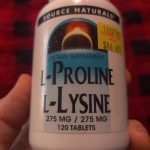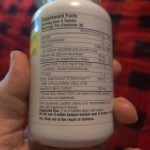Enter The Enigmatic Vitamin C
In the unfathomable intricacy of the cosmos, with its kaleidoscope of elements and compounds, few are as taken for granted and yet so profoundly vital as that humble molecule known as vitamin C. This seemingly insignificant organic compound weaves a rather fascinating narrative. Born from the cauldron of evolution, it has scribed an epoch-defining tale in our human history, highlighting the intimate kinship of man and nature, one that invites us to contemplate not just our biological existence but our very essence and vitality.
Ascorbic acid, commonly referred to as vitamin C, tells an epic saga in itself, enmeshed within the evolutionary matrix of life. Embark upon this story a few hundred million years ago, when most mammals evolved to biosynthesize their vitamin C. But the plot thickens for us Homo sapiens, along with a handful of our primate kin and guinea pigs, abandoned this ability due to a genetic mutation – a twist in our DNA helix.
Herein lays the paradox. We humans, such magnificently complex organisms, are dependent on external sources for this vital molecule. Doesn’t that strike you as profoundly strange and yet beautifully interconnected? This dependency on vitamin C reflects our intrinsic and inescapable connection with nature. To nourish ourselves with it, we engage in an intricate dance with plants and animals, a testimony to the unity of life and a humbling reminder that we are, in fact, a part of the great cosmic drama, not mere observers.
Throughout our human story, vitamin C has made its appearances rather conspicuously. Take the age of seafaring exploration, when sailors embarked on months-long voyages into the unknown. These adventurers, having limited access to fresh fruits and vegetables, often fell prey to scurvy, a disease caused by vitamin C deficiency. It is a poignant reminder of the consequences of severing our ties with nature, severing ourselves from that life-giving matrix.
But as is the nature of life, healing, and transformation arise from the ashes of destruction. The suffering brought by scurvy eventually led to the discovery of a simple cure – an influx of citrus fruits into the sailor’s diet, reconnecting them with their natural roots. Once science caught up and the concept of vitamins was understood in the early 20th century, the humble ascorbic acid was given its rightful identity – Vitamin C. It’s as if we relearned a pearl of ancient wisdom – that our well-being is entwined with the bounty of nature.
The exploration of vitamin C’s role in human health has been akin to a journey down a long and winding river. From its early association with scurvy prevention, we have unearthed its function in a myriad of essential physiological processes. As an antioxidant, it safeguards our cells against oxidative damage, that cruel yet inevitable process of aging and decay. It plays a crucial role in the synthesis of collagen, that prolific protein that forms our skin, bones, and blood vessels, binding us together in a structural ballet. And let us not forget its role in bolstering our immune system, that complex defense network that equips us to negotiate the ebb and flow of life.
Vitamin C, in essence, is a linchpin for our survival and well-being. Yet, isn’t it intriguing that such a fundamental ingredient to our existence is one we cannot produce internally? It’s as if life devised a clever mechanism to constantly remind us of our biological humility and our perpetual communion with nature.
Here we are, sentient beings suspended in the cosmos, bound by the need for a molecule that anchors us to the earth and to life itself. In its subtlety, vitamin C encourages us to reconnect with our roots, to engage in the dance of give-and-take with nature. It reminds us to honor the interconnectedness of life and uphold the delicate balance that sustains us.
It is not a mere molecule but a symbol, a testament to our inherent bond with the natural world, and a call to continually nurture this relationship for our collective health and well-being. In its absence, we are less vibrant, less alive. In its presence, we are buoyed, more connected, and pulsating with life.
Like a Zen koan, the tale of vitamin C leads us to an unexpected revelation – that we are not separate entities but part of an intricate tapestry of life. Thus, by consuming and being sustained by vitamin C, we are participating in a timeless dance, a profound dialogue between man and nature, between the individual and the cosmos.
So, the next time you consume vitamin C, whether in an orange, a bell pepper, or a supplement, remember the journey it signifies – our evolution, our history, our symbiosis with nature. Remember the delicate balance it represents, and honor this vital connection. For in this mindful act, we affirm not just our survival but also our interconnection with the cosmos, our vitality, and our well-being.

